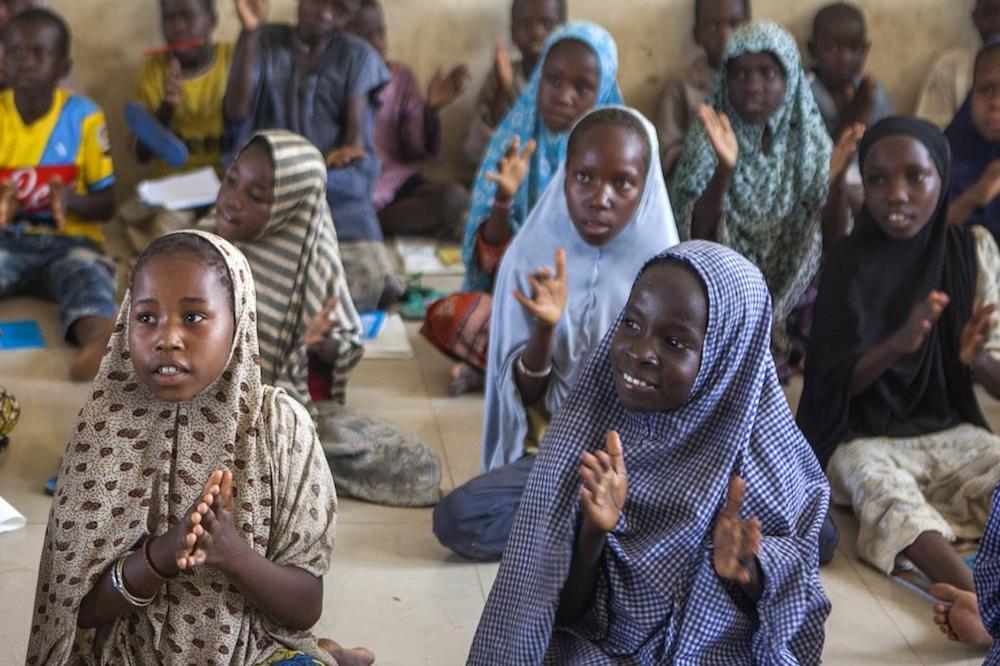
Indian children rescued from bonded labour to get more compensation
Child labour
An Indian bonded child labourer cries during a rescue operation by the charity Bachpan Bachao Andolan in New Delhi
The Indian government plans a five-fold increase in compensation given to rescued bonded labourers.
But campaigners said more must be done to ensure vulnerable people receive the money soon after being rescued, so they can start new lives.
The revised guidelines, awaiting final approval from the Ministry of Labour and Employment, would increase compensation to a minimum of 100,000 rupees ($1450) from 20,000 rupees ($290), a senior ministry official said.
The first revision of the scheme since 1999 also creates special categories to compensate young children, including orphans, disabled people and girls rescued from begging rings and brothels.
A category for transgenders, who often end up begging on the streets, has also been created and they will be provided with the maximum compensation of 300,000 rupees ($4360).
Almost 36 million people are enslaved worldwide, trafficked into brothels, forced into manual labour, stuck in debt bondage or born into servitude, according to the 2014 Global Slavery Index.
Nearly half – 16 million – are in India. Many are lured from poor, rural areas with the promise of good jobs or marriage but then sold into domestic work, prostitution, brick kilns or textile industries. Most are unpaid or held in debt bondage.
Children held in bonded or other forms or labour often do not go to school, robbing them of an education and their future.
The Global Slavery Index says: “There are reports of women and children from India and neighbouring countries being recruited with promises of non-existent jobs and later sold for sexual exploitation or forced into sham marriages.
“In some religious groups, pre-pubescent girls are sold for sexual servitude in temples. Recent reports suggest that one child goes missing every eight minutes; it is feared that some are sold into forced begging, domestic work and commercial sexual exploitation.”
Rescued bonded child labourers walk into a school following a rescue operation in New Delhi by Bachpan Bachao Andolan
There are 5.7 million Indian child workers between the ages of five and 17, out of 168 million globally, according to an International Labour Organization report.
In December, the Indian government announced it wanted to amend a three-decades-old law which bans children under 14 from working in 18 hazardous occupations and 65 processes including mining, gem cutting and cement manufacture.
The changes would outlaw child labour below 14 in all sectors, stiffen penalties for offenders and expand the age range covered to 15 to 18-year-olds. But children who help their family or family businesses could still work outside school hours.
Nobel Laureate and child rights activist Kailash Satyarthi – whose charity Bachpan Bachao Andolan (Save the Childhood Movement) has rescued more than 80,000 enslaved children – called the move “regressive, not progressive”.
Last week, Mr Satyarthji announced plans to launch a “100 million to 100 million” – where 100 million young people will stand up for 100 million children “who are exploited, who become victims of child labour, overlapping abuses and vulnerabilities, and are deprived of their freedom”.
More than a quarter of a million bonded labourers have been compensated in India since the scheme was put in place in 1978, according to government figures.
Until now, each identified bonded labourer is given 2000 rupees ($29) immediately after being rescued and sent back to their home with the promise of an additional 20,000 rupees ($290).
“It’s too little and often comes too late,” said S. Vasanthi, member of the Thiruvallur district Released Bonded Labour Association in the southern Indian state of Tamil Nadu.
“Some of us have waited for nearly two years for this amount, which doesn’t really help us. How can anyone start afresh with just 20,000 rupees?”
The Thomson Reuters Foundation, the charitable arm of Thomson Reuters, covers humanitarian news, women’s rights, corruption and climate change.
More news

